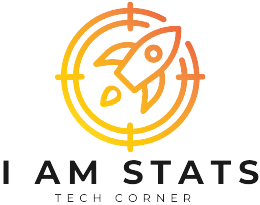Welcome to the world of Natural Language Processing (NLP), where technology meets language to create revolutionary advancements in communication and customer service. From enhancing user experience to breaking language barriers, NLP is transforming the way we interact and connect with the world around us.
In this article, we will explore the diverse applications and innovative breakthroughs in NLP that are shaping our future. From personalized customer support to seamless translations, NLP technologies are driving communication advancements and revolutionizing various industries.
Key Takeaways:
- NLP is revolutionizing communication and enhancing customer service.
- NLP technologies improve user experience and provide personalized support in customer service interactions.
- By breaking language barriers, NLP enables seamless translation and facilitates global communication.
- The future of NLP holds exciting trends and innovations that will shape various industries.
- NLP has the potential to drive communication advancements and enhance various aspects of our lives.
Enhancing User Experience with NLP in Customer Service
Natural Language Processing (NLP) has revolutionized the way businesses interact with their customers. By leveraging the power of NLP in customer service, companies can now provide personalized support, enhance user experience, and optimize customer satisfaction.
Imagine a scenario where you encounter a problem while using a product or service. Instead of navigating through a complex menu system or waiting in queues, NLP-enabled customer service platforms utilize intelligent chatbots and virtual assistants to provide instant and efficient support.
“Hello, how can I assist you today?”
These AI-powered chatbots are designed to understand and respond to your queries in a conversational manner, making the interaction feel more natural and human-like. Through advanced algorithms and machine learning models, NLP technologies enable chatbots to comprehend the context, sentiment, and intent behind the customer’s messages.
This level of understanding allows automated systems to provide accurate and relevant responses, helping customers resolve their issues quickly. By minimizing the need for human intervention, businesses can scale their customer support operations, ensuring that every customer receives timely assistance.
NLP in customer service also plays a crucial role in enhancing the user experience. Through sentiment analysis and emotion detection, AI-powered systems can gauge the customer’s mood, detecting frustration or dissatisfaction. This valuable insight helps businesses identify areas for improvement, optimize service delivery, and proactively address customer concerns.
Furthermore, NLP technologies enable personalized customer interactions by leveraging customer data and preferences. Chatbots can analyze past conversations and transactional history to provide tailored recommendations, offer targeted promotions, and suggest relevant solutions.
Benefits of NLP in Customer Service:
- Instant and efficient customer support
- Natural and conversational interactions
- Scalable customer service operations
- Enhanced user experience through sentiment analysis
- Personalized recommendations and solutions
Implementing NLP in customer service not only enhances the user experience but also creates a competitive edge for businesses. By leveraging the power of NLP technologies, companies can deliver exceptional customer service, build stronger relationships with their customers, and drive customer loyalty and retention.
Breaking Language Barriers with NLP Technologies
Communication plays a vital role in our increasingly interconnected world. However, language barriers often hinder effective global collaboration, commerce, and understanding. That’s where Natural Language Processing (NLP) technologies come into play, breaking down these barriers and enabling seamless communication across languages.
NLP technologies utilize advanced algorithms and machine learning techniques to process and understand human language. By leveraging the power of artificial intelligence, these technologies can provide accurate and real-time translations, facilitating communication between individuals who speak different languages.
“Language is the road map of a culture. It tells you where its people come from and where they are going.” – Rita Mae Brown
NLP-powered translation tools have significantly evolved in recent years, thanks to the vast amount of multilingual data available and the advancements in deep learning models. These tools can accurately translate text, audio, and even visual content, making language barriers increasingly obsolete.
Imagine you’re attending an international conference where participants speak different languages. With NLP technologies, you can use real-time translation apps that instantly convert speeches into your language. This enables you to actively participate in discussions, engage with others, and gain knowledge from diverse perspectives.
Moreover, NLP technologies are also transforming the way businesses interact with global customers. Virtual assistants powered by NLP can understand and respond to customer inquiries in multiple languages, providing personalized and efficient support to a diverse customer base.
Benefits of NLP in Breaking Language Barriers:
- Global Communication: NLP technologies enhance global communication by allowing individuals from different linguistic backgrounds to understand and connect with each other effortlessly.
- Improved Accessibility: With NLP-powered translation tools, vital information, services, and resources become accessible to people who may have previously faced language barriers.
- Cultural Understanding: Breaking language barriers fosters cultural understanding and appreciation, enabling individuals to learn about different traditions, customs, and perspectives.
- Facilitating Trade and Collaboration: NLP technologies open doors to international business opportunities, facilitating trade, and collaboration across borders.
By utilizing NLP technologies, we can overcome linguistic limitations and unlock a world of opportunities for collaboration, understanding, and growth. These advancements are revolutionizing the way we communicate, enabling a more inclusive and interconnected global society.
Whether it’s fostering meaningful conversations, easing global business transactions, or enhancing cultural exchange, NLP technologies are proving to be a game-changer in breaking language barriers. With further advancements and innovations, we can look forward to a future where language is no longer a barrier, but a bridge connecting individuals and cultures worldwide.
Trends and Innovations: The Future of NLP
As technology continues to rapidly evolve, so does the field of Natural Language Processing (NLP). The future of NLP holds immense promise, with innovative advancements and emerging trends shaping the way we communicate and interact with machines. Let’s explore what lies ahead in the world of NLP and how it is revolutionizing various industries.
The Rise of Conversational AI
Conversational AI, powered by NLP technologies, is set to transform the way we interact with computers, chatbots, and virtual assistants. With advancements in sentiment analysis, voice recognition, and contextual understanding, these intelligent systems can engage in human-like conversations and provide personalized assistance. From virtual customer service agents to voice-activated smart devices, Conversational AI is enhancing user experiences and streamlining everyday tasks.
Next-Level Language Understanding
The future of NLP holds promising developments in language understanding, enabling machines to interpret and comprehend human language more accurately. Advancements in natural language understanding algorithms and deep learning techniques are fueling the growth of NLP-powered applications. This includes sentiment analysis, intent recognition, and semantic understanding, allowing machines to grasp the nuances of human communication and respond intelligently.
Unleashing Multilingual Capabilities
Breaking language barriers is a key focus for the future of NLP. With advancements in machine translation, language generation, and sentiment analysis across various languages, NLP technologies are facilitating seamless global communication. From real-time translation services to multilingual chatbots, businesses and individuals can connect with a diverse audience, expanding opportunities and fostering cultural understanding.
“The future of NLP lies in its ability to bridge the gap between humans and machines, enabling efficient and meaningful communication across diverse languages and cultures.”
Transforming Healthcare with NLP
NLP is making significant strides in improving patient care, diagnosis, and medical research. By analyzing vast amounts of unstructured healthcare data, NLP algorithms can identify patterns, detect diseases, and assist in personalized treatment plans. From clinical documentation to medical imaging analysis, the future of NLP in healthcare holds great potential for precision medicine and revolutionizing healthcare delivery.
| NLP Application | Industry |
|---|---|
| Conversational AI chatbots | Customer Service |
| Sentiment analysis | Marketing |
| Machine translation | Global Business |
| Virtual assistants | Home Automation |
These are just a few examples of how NLP is driving innovation across industries. From customer service to marketing and beyond, businesses are leveraging NLP technologies to gain a competitive edge and deliver exceptional user experiences.
The future of NLP is filled with possibilities and holds the potential to unlock countless opportunities across diverse sectors. Embracing these trends and innovations will pave the way for a more connected, efficient, and intelligent future.
Conclusion
In conclusion, Natural Language Processing (NLP) has brought about significant advances in various fields, revolutionizing communication and enhancing user experience. From its application in customer service to breaking language barriers, NLP technologies have paved the way for seamless interactions and improved accessibility.
By leveraging NLP in customer service, organizations can provide personalized support and streamline the resolution process, resulting in higher customer satisfaction levels. NLP algorithms analyze customer queries and extract relevant information, enabling quick and accurate responses.
Moreover, breaking language barriers with NLP technologies has opened up a world of possibilities in global communication. Real-time translation and language processing algorithms have made it easier for individuals to understand and be understood, regardless of their native language. This has facilitated business collaborations, cultural exchanges, and fostered a more interconnected world.
The future of NLP holds exciting trends and innovations, as the technology continues to evolve. With advancements in machine learning and deep learning, NLP is expected to become even more versatile and efficient in processing and understanding human language. From voice assistants to sentiment analysis, NLP will continue to shape various industries and improve our everyday lives.







